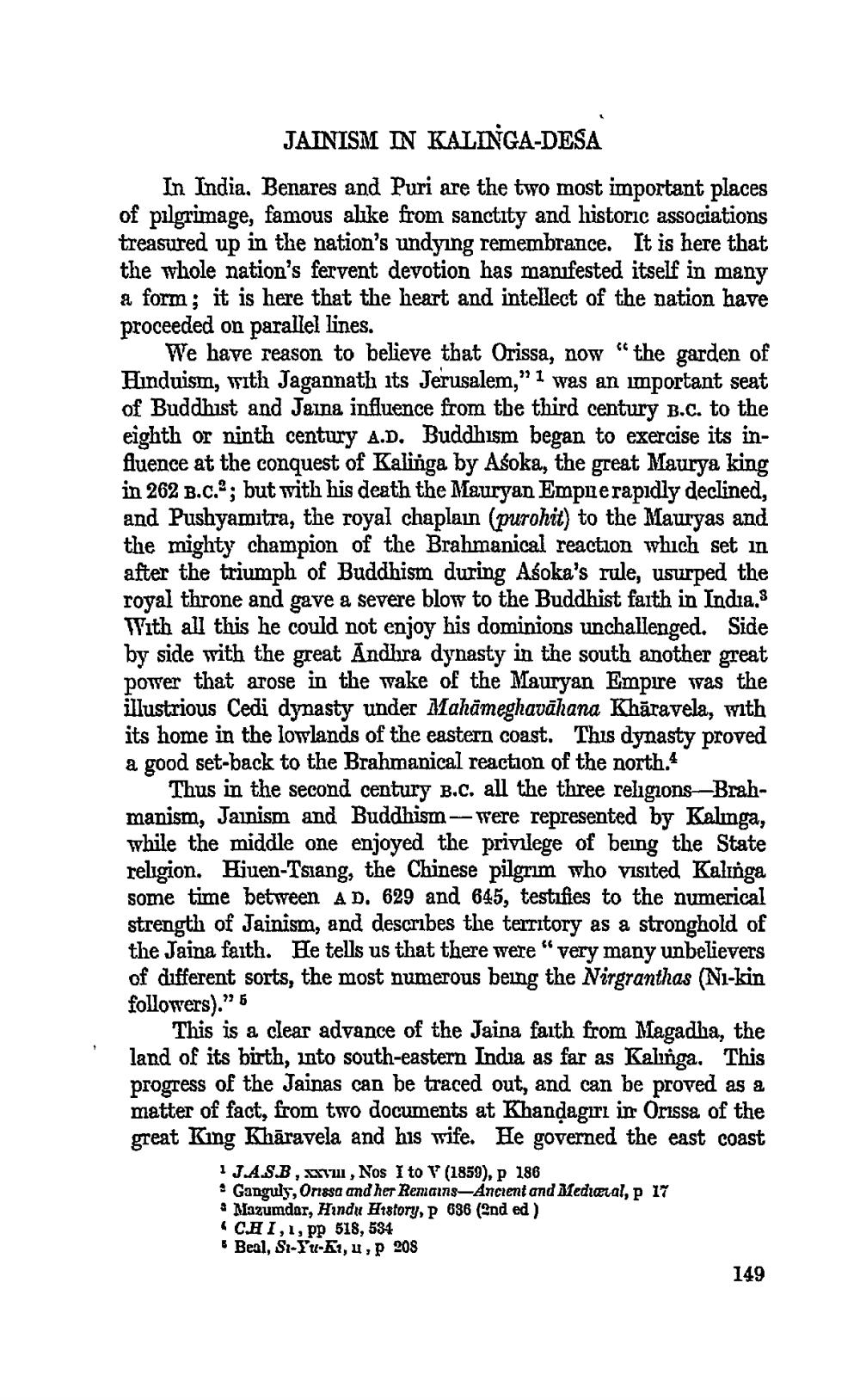________________ JAINISM IN KALINGA-DESA In India. Benares and Puri are the two most important places of pilgrimage, famous alike from sanctity and historic associations treasured up in the nation's undying remembrance. It is here that the whole nation's fervent devotion has manifested itself in many a form; it is here that the heart and intellect of the nation have proceeded on parallel lines. We have reason to believe that Orissa, now "the garden of Hinduism, with Jagannath its Jerusalem," 1 was an important seat of Buddhist and Jaina influence from the third century B.c. to the eighth or ninth century A.D. Buddhism began to exercise its influence at the conquest of Kalinga by Asoka, the great Maurya king in 262 B.C.'; but with his death the Mauryan Empherapidly declined, and Pushyamitra, the royal chaplain (purohit) to the Mauryas and the mighty champion of the Brahmanical reaction which set in after the triumph of Buddhism during Asoka's rule, usurped the royal throne and gave a severe blow to the Buddhist faith in India. Yith all this he could not enjoy his dominions unchallenged. Side by side with the great Andhra dynasty in the south another great pover that arose in the wake of the Mauryan Empire was the illustrious Cedi dynasty under Mahameghavahana Kharavela, with its home in the lowlands of the eastern coast. This dynasty proved a good set-back to the Brahmanical reaction of the north. Thus in the second century B.C. all the three religions Brahmanism, Jainism and Buddhism -- Tere represented by Kalinga, while the middle one enjoyed the privilege of being the State religion. Hjuen-Tsang, the Chinese pilgrim who visited Kalinga some time between AD. 629 and 645, testifies to the numerical strength of Jainism, and describes the territory as a stronghold of the Jaina faith. He tells us that there were "very many unbelievers of different sorts, the most numerous being the Nirgranthas (Ni-kin followers)." 5 This is a clear advance of the Jaina faith from Magadha, the land of its birth, into south-eastern India as far as Kalnga. This progress of the Jainas can be traced out, and can be proved as a matter of fact, from two documents at Khandagiri ir Orissa of the great King Kharavela and his wife. He governed the east coast 1 J.A.S.B , xxvu, Nos I to V (1859), p 186 Ganguis, Orissa and her Renains-Ancient and Mediaetal, p 17 Mazumdar, Hindu History, P 696 (2nd ed) CHI,1, pp 518, 534 * Beal, S1-Yu-61,,P 208 149




